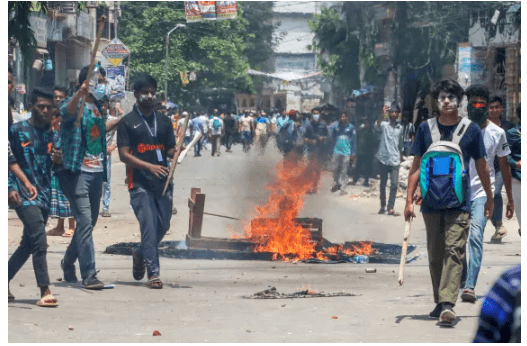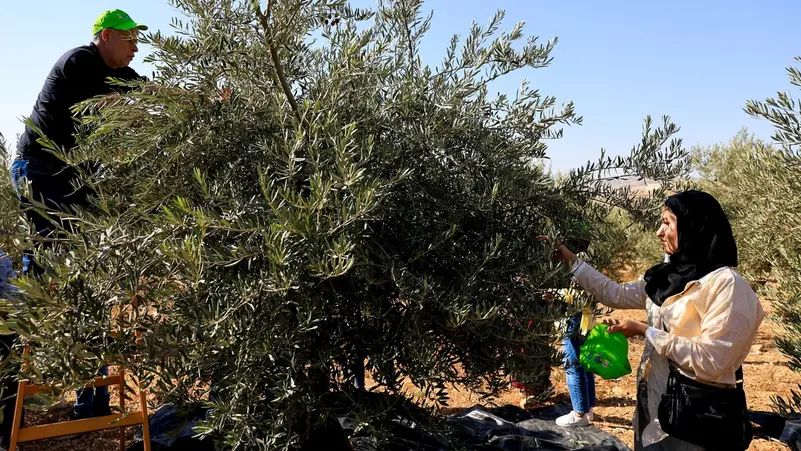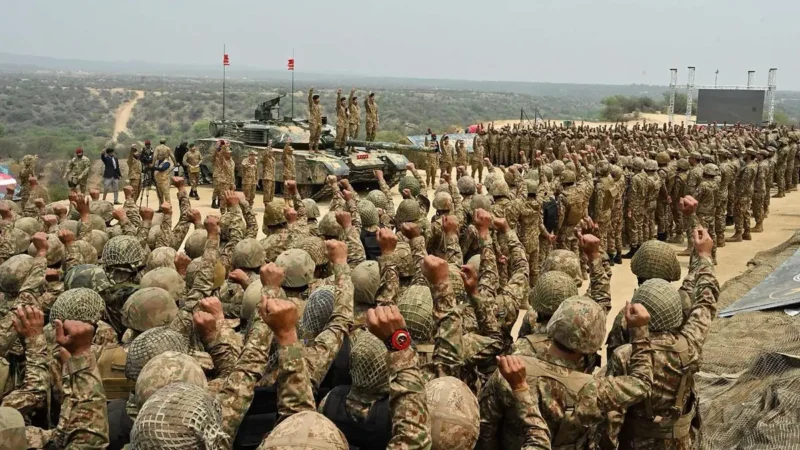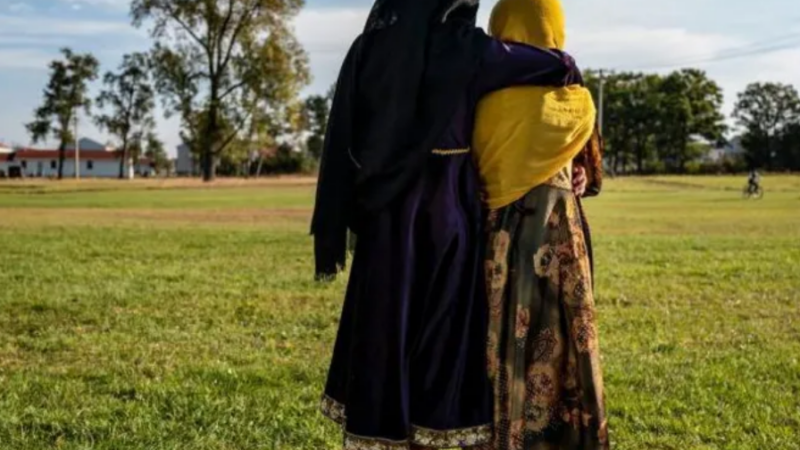Who were the Razakars, and why are they essential to the Bangladesh protests?

The Supreme Court of Bangladesh on Sunday slashed a controversial quota in government jobs that was at the heart of mass nationwide protests that swamped the South Asian nation in recent weeks.
Student protesters were agitating against a quota system under which 56 percent of government jobs were reserved for select categories of citizens. Within that, their principal gripe was over a 30 percent quota for descendants of freedom fighters from the country’s 1971 liberation war against Pakistan.
The court shrunk that 30 percent quota to 5 percent, and the remaining quotas to another 2 percent, opening up the remaining 93 percent jobs for all other Bangladeshis.
But the protesters have refused to end their movement until the government notifies these changes. They are also demanding justice for the more than 100 people who have been killed in clashes between protesters on the one hand, and a combination of security forces and purported members of the governing Awami League’s student body on the other hand. A countrywide curfew remains in place, with the military manning the streets.
Yet, as the protests have grown, they have morphed from a reflection of a job crisis to a broader battle over identity in a country that is 53 years old but where a vast majority of the population was not born when Bangladesh secured freedom.
At the heart of this is a term that the country’s prime minister, Sheikh Hasina, used amid the protests, and which set off an angry response from protesters: “Razakars”.
The word means “volunteers” and is considered derogatory in Bangladesh as it refers to people who supported the Pakistani military’s operation to quell the Bangladesh liberation war and were accused of heinous crimes.
So what did Hasina mean? Who were the Razakars, what role did they play in Bangladesh’s freedom war, and what happened to them after the country gained independence? And why is the term so controversial?

What did Sheikh Hasina say?
As protesters demanded that the quota for families of freedom fighters be scrapped, the PM pushed back. The quota system was first introduced in Bangladesh in 1972 – after the country became independent in December 1971 – by Sheikh Mujibur Rahman, father of Hasina.
“Why do they have so much resentment towards freedom fighters?” Hasina asked in public comments. “If the grandchildren of the freedom fighters don’t get quota benefits, should the grandchildren of Razakars get the benefit?”
The students pushed back, accusing her of trying to portray all critics and opponents as Razakars. They adopted the slogan, “Who are you? Who am I – Razakar, Razakar?”, along with another chant, “Asked for rights and became a Razakar”, which has become ubiquitous among the protesters.
Hasina then doubled down in her criticism of the protesters, calling the slogans “regrettable”.
“They don’t feel ashamed to call themselves Razakars. They don’t know how the Pakistani occupation forces and Razakar Bahini [Razakar Army] had resorted to torture in the country – they didn’t see the inhuman torture and bodies lying on the roads. So, they don’t feel ashamed to call themselves Razakar,” she said.
Author and scholar Anam Zakaria said Razakar is a “loaded term”, evoking memories of war crimes, including the killing and rape of the Bengali population and other ethnic minorities in 1971.
“It is used synonymously with collaborators and anti-liberation forces and thus also seen as antistate and pro-Pakistan. There is hence a lot of stigma, pain, and trauma that is evoked with the use of this term,” she told Al Jazeera.
Who were the Razakars?
When the British partitioned India and created Pakistan in August 1947, the newly formed state consisted of two regions: West Pakistan and East Pakistan.
East Pakistan was home to 55 percent of the total population, with nearly 44 million people residing there. Yet the country was governed, consistently, by leaders in West Pakistan. Over the following two decades, resentment in East Pakistan grew over the lack of resources and decision-making influence, leading the country to the brink of breakup by 1971.
According to Ali Usman Qasmi, a historian at the Lahore University of Management Sciences, the Razakars were mostly Urdu-speaking migrants who moved to East Pakistan from what is today India during the partition and were part of an auxiliary force created by the Pakistani military to support its operation to quell the rebellion in the East.
“The army needed local support,” he told Al Jazeera. “The student wing of the religio-political party Jamaat-e-Islami in East Pakistan provided them with men who believed that they must support the army.”
Qasmi said the men who volunteered to help the military were useful because they were well-versed in the local Bengali language and familiar with the terrain.
“Initially, they were only called volunteers and were part of civil defence. But from May 1971 onwards, they were formally organised into two different groups, Al-Badr and Al Shams,” he said. “They were trained by the military itself.”
Zakaria concurred with Qasmi and said the Razakars were created by the Pakistani military to secure local support, insights, and intelligence on targets and locations.
“While most of these belonged to the Urdu-speaking community, commonly referred to as Biharis, they also included pro-Pakistani Bengalis who stood for a united Pakistan,” Zakaria said.
What role did the Razakars play in Bangladesh’s war of liberation?
Hundreds of thousands of people were killed during the war of liberation, and thousands of women were raped and sexually assaulted. The government of the newly formed Bangladesh accused Pakistan of committing genocide.
The Pakistani army was involved in a “brutal military operation” as it tried to keep control of the East, said Qasmi. And pivotal to its efforts were the Razakars.
“Razakars were central to the way the military conducted its operations in 1971, including the accusations of war crimes that they allegedly committed,” he added.
In one widely reported incident towards the end of the war when Pakistan’s defeat was imminent, the Pakistani military, with the help of Razakars, allegedly rounded up close to 200 Bengali intellectuals, artists, journalists, and academics, and allegedly shot them.
“Razakars were alleged to be directly involved in this massacre. So you can imagine, they have a very dreadful image and a bloody legacy,” said Qasmi.
What happened to Razakars after the creation of Bangladesh?
The Indian Army entered East Pakistan and fought alongside liberation forces, eventually defeating Pakistan. Once the Pakistani military surrendered to the Indian Army, many Razakars were attacked and killed by locals, Qasmi said.
“Razakars were at the receiving end of considerable violence as they were targeted for being collaborators with the Pakistani military,” he said. Some of them moved to Pakistan.
But several Razakars who chose to stay back were promoted to senior government positions, said Zakaria. This resulted in a civil society movement in the 1990s, with these promotions being labelled as a case of “anti-liberation forces coming to power”.
“As a reaction, a movement was launched to hold these people responsible for their crimes during the war,” she said.
After Hasina came back to power in 2009, her government founded an International Crimes Tribunal, with the mandate to investigate and prosecute those accused of “committing genocide” during the 1971 war, including Pakistani army officials and local collaborators who were members of Al-Badr and Al Shams forces.
Historian Qasmi said the tribunal’s procedures, which identified more than 1,600 people as suspects, were “remarkably flawed”.
“The trials were seen as targeting political opponents, but it was still the first wave in which Bangladesh was seen as trying to provide justice to the victims of the 1971 war, and as a result, a number of Razakars were indicted and Hasina received a lot of support for it,” he added.
More than a decade later, the latest protests show that the legacy of the Razakars remains a wound that has not healed — 53 years after the 1971 war of independence.






